Animals can also be categorized on their dietary preferences into three main types: Carnivores animals, Herbivores animals, and Omnivores animals. These dietary categories reflect the different ways in which animals have adapted to obtain their nutritional needs in various ecosystems. As we already know animals are a very important part of biology. A huge number of animals are present in our Earth’s ecosystem.
What are Carnivore Animals?
Carnivore animals possess various physical and behavioral characteristics that enable them to thrive on a diet of meat. These features can include sharp teeth for tearing flesh, claws or talons for catching and holding prey, excellent senses for detecting movement or scent of potential prey, and a digestive system suited for processing animal protein efficiently.
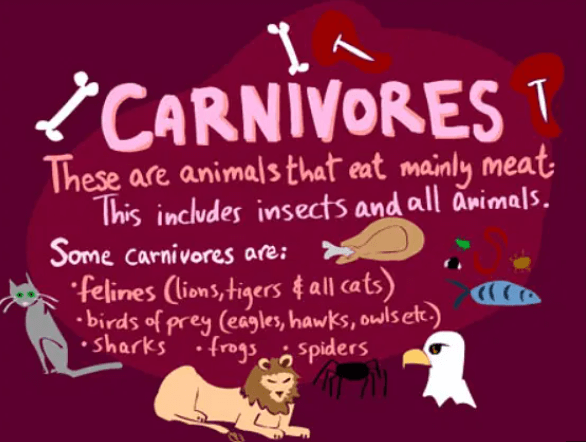
Carnivores can be further categorized based on their hunting strategies and dietary preferences. For example, some are obligate carnivores, which means they must eat meat to survive, while others are facultative carnivores, meaning they can consume both animals and plants but often favor meat. These animals play crucial roles in ecosystems by helping control populations of herbivorous animals and contributing to the balance of nature.
List 10 Carnivores Animals
- Great White Shark
- Bald Eagle
- Wolf
- Crocodile
- Hyena
- Polar Bear
- Komodo Dragon
- Cheeta
- Piranha
- Jaguar
Other Details About Carnivores Animals
Carnivores animals exhibit a diverse range of behaviors and adaptations, making them a fascinating group of creatures in the animal kingdom.
- Adaptation: Carnivores typically have sharp teeth and claws for hunting and tearing flesh. Their digestive systems are designed to process meat efficiently.
- Types: There are different types of carnivores, including obligate carnivores (those that exclusively eat meat) and facultative carnivores (those that can eat both meat and plant matter). Examples of obligate carnivores include big cats like lions and tigers, while facultative carnivores include animals like bears and raccoons.
- Hunting Strategies: Carnivores employ various hunting techniques, such as stalking, ambush, pursuit, and pack hunting, depending on their species and prey.
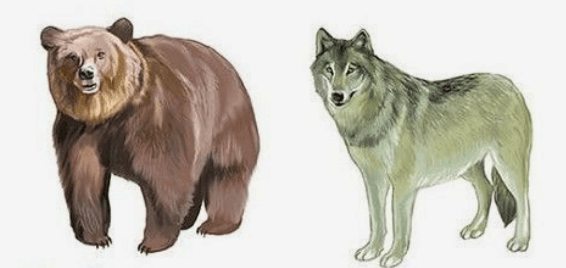
- Dietary Preferences: Some carnivores are specialized in consuming specific types of prey, like piscivores (fish-eaters), insectivores (insect-eaters), and scavengers (feeding on carrion).
- Carnivores Examples: Common carnivorous animals include wolves, hyenas, eagles, crocodiles, and sharks. Each has its unique adaptations for hunting and consuming meat.
- Domestication: Humans have domesticated some carnivorous animals, like dogs and cats, which have been bred for various purposes, including hunting and companionship.
Physical Adaptations of Carnivore Animals
Carnivore animals have several physical adaptations that enable them to hunt, catch, and consume prey efficiently. Here are some key points on their physical adaptations. These adaptations help carnivore animals survive in their respective environments and play a crucial role in marinating the balance of the ecosystem.
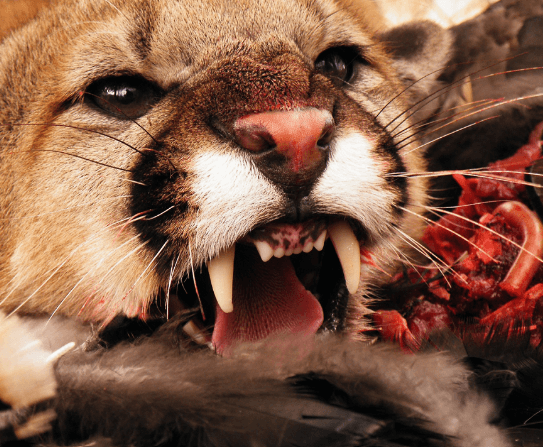
- Sharp Teeth: Carnivores have sharp, pointed teeth designed for tearing flesh. Canines are especially prominent and aid in gripping and killing prey.
- Claws: Many carnivores have claws that are sharp and strong, allowing them to catch and hold onto prey. These claws can be retractable, like in big cats, providing an advantage while hunting.
- Strong Jaws: Carnivore animals typically have powerful jaws that allow them to deliver a strong bite force, crucial for killing prey and breaking bones to access the marrow.
- Excellent Vision: Carnivores often have keen eyesight to spot prey from a distance. Predators like eagles and hawks have excellent vision for hunting.
- Keen Sense of Smell: A highly developed sense of smell helps carnivores track prey over long distances. This is especially true for animals like wolves and bears.
- Camouflage: Some carnivores, like leopards, have coats with patterns that provide effective camouflage, allowing them to blend into their surroundings and ambush prey.
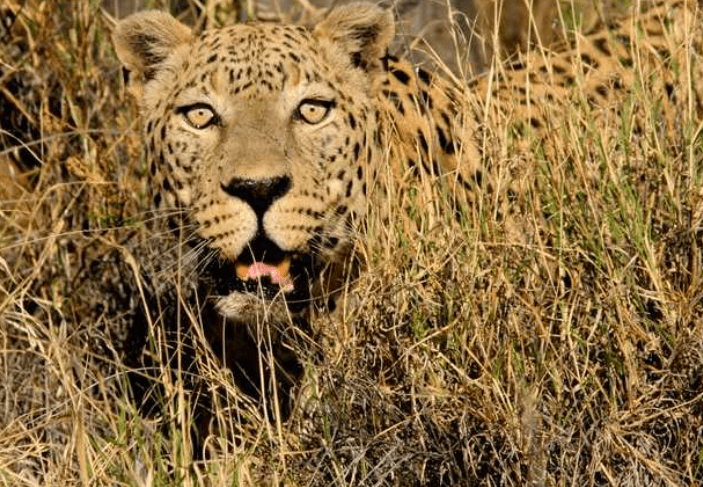
- Digestive Adaptations: Carnivores typically have short, simple digestive systems suited for processing animal protein. Their digestive tracts are adapted to handle a meat-based diet efficiently.
- Specialized Hunting Tools: Certain carnivores, such as birds of prey, have specialized hunting tools like sharp beaks and tools like sharp beaks and talons that enable them to catch and kill specific types of prey.
Behavioural Features of Carnivores
Some of the Behavioural features of Carnivore animals have been discussed below:
- Hunting Instinct: Carnivores possess a strong instinct to hunt and capture prey, often using stealth, speed, or strength.
- Territorial Behavior: Many carnivores defend a specific territory that provides them with food and mating opportunities.
- Solitary or Pack Hunting: Some carnivores, like lions or wolves, hunt in groups, while others, like tigers or leopards, are solitary hunters.
- Sharp Senses: Carnivores generally have heightened senses of smell, sight, or hearing, which help them detect prey.
- Energy Conservation: Many carnivores conserve energy by resting for long periods between meals, as their food is usually high in calories.
- Aggressive Feeding: Some carnivores may show aggression while eating or defending a kill to ensure they consume enough food.
- Nocturnal Hunting: Some carnivores, like owls and big cats, are primarily active during the night to take advantage of cooler temperatures or avoid competition.
- Scavenging: Some carnivores, such as hyenas, may also scavenge for food, consuming animals killed by others.
Examples of Carnivores Animals
The animals included in the carnivores category have varying degrees of carnivorous diets, with some being obligate carnivores (primarily meat eaters) and others occasionally incorporating meat into their diets.
| Examples of Carnivores Animals | |
| Lion | Hawk |
| Tiger | Komodo Dragon |
| Leopard | Tasmanian Devil |
| Cheetah | Lynx |
| Wolf | Bobcat |
| Fox | Snow Leopard |
| Hyena | Red Panda (occasionally eats meat) |
| Polar bear | Spider (some species are carnivorous) |
| Grizzle bear | Praying mantis |
| Crocodile | Venus flytrap (carnivorous plant) |
| Alligator | Seahawk |
| Shark | Gharial (fish-eating crocodile) |
| Eagle | Barracuda |
| Falcons | Snowy owl |
| Owl | Great White Shark |
List of Some More Carnivore Animals with their Description
Here we have mentioned a list of carnivore animals with their description.
| List of Some Carnivore Animals | |
| Carnivorous Animals | Description |
| Lion | Lions are large, social cats known for hunting in groups. They are apex predators in the African savannas, preying on various mammals. |
| Tiger | Tigers are the largest big cats and are solitary hunters. They stalk and ambush their prey, which includes deer, wild boar, and other large animals. |
| Great White Shark | Great white sharks are powerful predators found in oceans worldwide. They primarily hunt seals, sea lions, and other marine mammals. |
| Bald Eagle | Bald Eagles are birds of prey native to North America. They primarily feed on fish, using their sharp talons to catch them from the water’s surface. |
| Cheetah | Cheetahs are known for their incredible speed and are found in Africa. They hunt by chasing down fast-running prey like gazelles and impalas. |
| Crocodile | Crocodiles are semi-aquatic reptiles. They are stealthy predators that lurk near the water’s edge and ambush animals that come to drink. |
| Polar Bear | Polar bears are apex predators in the Arctic. They primarily hunt seals and are excellent swimmers and divers. |
| Red Fox | Red foxes are adaptable carnivores found in various habitats. They hunt small mammals, and birds, and sometimes scavenge for food. |
Name the 5 Largest Carnivore animals
The five largest carnivorous animals are as follows:
- Southern Elephant Seal: The largest carnivorous mammal, with males weighing up to 4,000 kg (8,800 lbs).
- Killer Whale (Orca): The largest member of the dolphin family, with males reaching up to 10,000 kg (22,000 lbs).
- Polar Bear: The largest land carnivore, weighing up to 700 kg (1,540 lbs).
- Siberian Tiger: The largest big cat, weighing up to 320 kg (700 lbs).
- Saltwater Crocodile: The largest living reptile, weighing up to 1,000 kg (2,200 lbs).

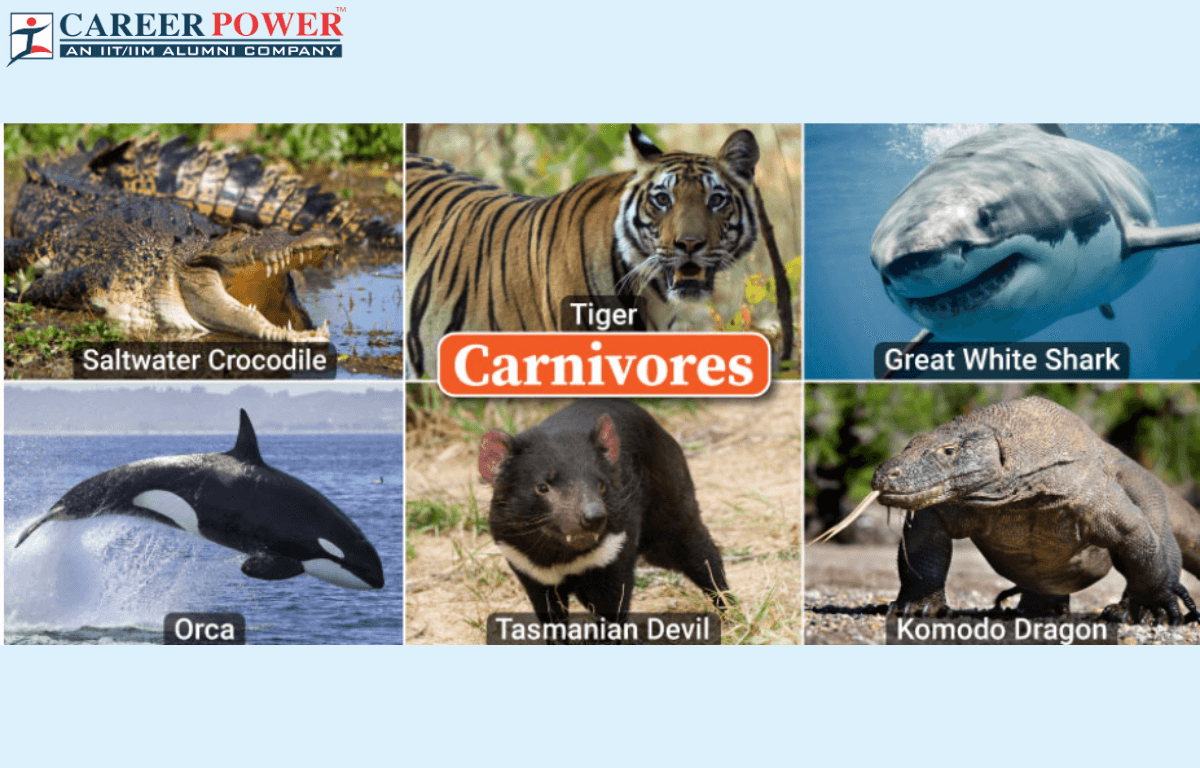

 50 Vegetables Name for Kids in English a...
50 Vegetables Name for Kids in English a...
 Food Chain: Definition, Types, Examples,...
Food Chain: Definition, Types, Examples,...
 Human Respiratory System: Definition, Di...
Human Respiratory System: Definition, Di...













